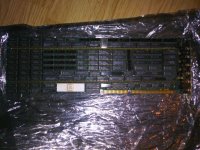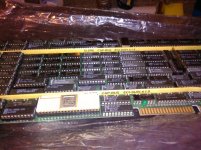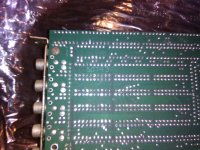2icebitn
Banned
It's such a generic term, but I don't know what else to call it. There isn't even firmware, as such it must be an addendum to another card I guess. If I were to plug it in, what should I expect to happen? Line up multiple NTSC monitors and get to play the same game across multiple monitors?

In case visibility leaves something to be desired, the white chip is a upd7220. As I read it seems it has a bit of onboard ROM, but not much. Intriguing. And no identification whatsoever, which is really weird.
Also components I've never seen otherwise:

And some numerics on back:


In case visibility leaves something to be desired, the white chip is a upd7220. As I read it seems it has a bit of onboard ROM, but not much. Intriguing. And no identification whatsoever, which is really weird.
Also components I've never seen otherwise:

And some numerics on back:

Last edited:
